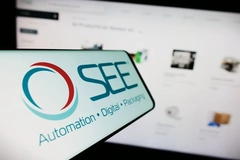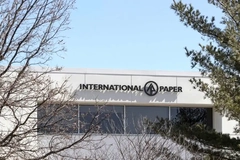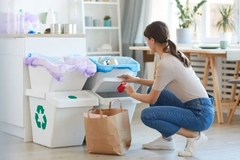Easter recycling: DS Smith research reveals UK consumer confusion causing mass holiday waste

19 Mar 2024 --- Research released yesterday by DS Smith found that although the majority (69%) of British citizens believe Easter eggs are excessively packaged, they plan to buy an estimated 156 million this year.
Britons spend over £415 million (US$526 million) on Easter eggs each year in the UK, meaning a significant number of cardboard boxes need to be recycled.
Moreover, around ten to 20 million greeting cards are sent and received around Easter. These cards add to the mountain of waste and recycling.
The poll noted that nearly half (47%) of “confectionary-crazed” Britons plan to buy three or more chocolate eggs this Easter. Their top priorities are value for money (65%), taste (57%) and volume of chocolate (43%).
Still, a fifth (20%) say they want them to come in fully recyclable packaging since 79% say they recycle at least one part of the box. However, inconsistent recycling guidelines across the country are causing confusion. Aluminum foil, for example, needs to be collected by one in five councils, and plastic recycling varies across the country. Cardboard remains the only consistently collected packaging material.
Chris Else, head of design at DS Smith, tells Packaging Insights: “At DS Smith, it is in our DNA to make packaging as sustainable as possible — we have more than 700 designers who are all trained in circularity and know how to design out waste, reduce carbon and increase the recyclability of products from the start.”
“As our research shows, shoppers are increasingly concerned about the amount of packaging some Easter Eggs come in. Educating people on how to accurately recycle each element of the packaging is crucial in making sure there isn’t cross-contamination in the recycling process. This is why we have released a number of top tips for Easter recycling, which we hope people will find useful when they indulge in their eggs over the Easter weekend.”
 Only 20% of UK councils collect aluminum foil.Easter recycling troubles
Only 20% of UK councils collect aluminum foil.Easter recycling troubles
The poll also indicated a high level of confusion among consumers about properly recycling Easter egg trash. Previous DS Smith research showed that by 2030, two in five paper and board packs will end up in landfill or incineration.
Respondents to the poll said just over a third (37%) always recycle the foil they’re wrapped in, less than half (49%) do the same for plastic and almost two-thirds (64%) for cardboard.
Failure to recycle is blamed primarily on a lack of recycling options for each element of Easter egg packaging in their local area (41%), unclear recycling instructions (28%) and simply forgetting (22%).
Samantha Upham, seasonal sustainability expert at DS Smith, says: “The hardest thing to digest this Easter shouldn’t be the recycling rules. Britons should feel free to enjoy a guilt-free Easter egg and be able to feel confident that the packaging they dispose of really does get recycled back into new products.”
“Confectionery companies have come a long way to remove unnecessary packaging and make the remaining wrapping recyclable. Now we just have to make sure that everyone has the best chance to recycle as much as possible.”
Top tips for recycling
Despite being a vital part of the packaging waste generated from Easter eggs, foil is the least-recycled component, according to DS Smith.
“It’s not always clear if, how and where we can recycle the foil of our Easter Eggs. Most councils accept foil for recycling, but it’s important to check with your local council for guidance. If it does, scrunch all the foil together into a ball to avoid small bits being lost in the recycling process,” says Upham.
While many companies have made efforts to reduce plastic usage, some still use plastic as windows and wrappers for their packaging.
“Common plastic used in Easter egg packaging is often the same as that used for drink bottles. This means most councils can recycle it, so be sure to check your local guidelines,” continues Upham.
“As most confectionary companies are now producing 100% recyclable Easter egg packaging, it has gotten easier over the years to recycle them. Save space by collapsing the box and prevent bins from overflowing.”
“Don’t forget to separate the plastic windows from the cardboard box and, remove any chocolate residue and make sure they are put in the correct bins.”
By Louis Gore-Langton











